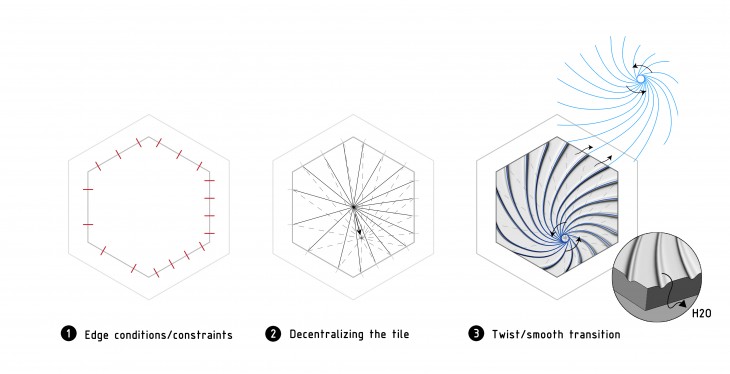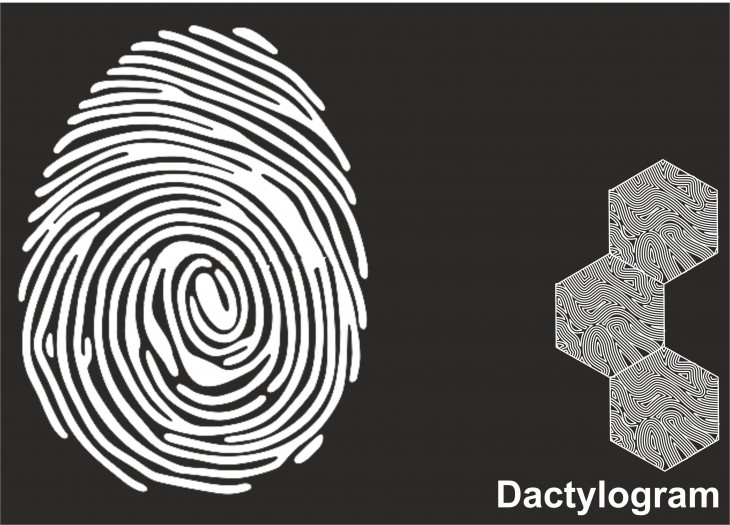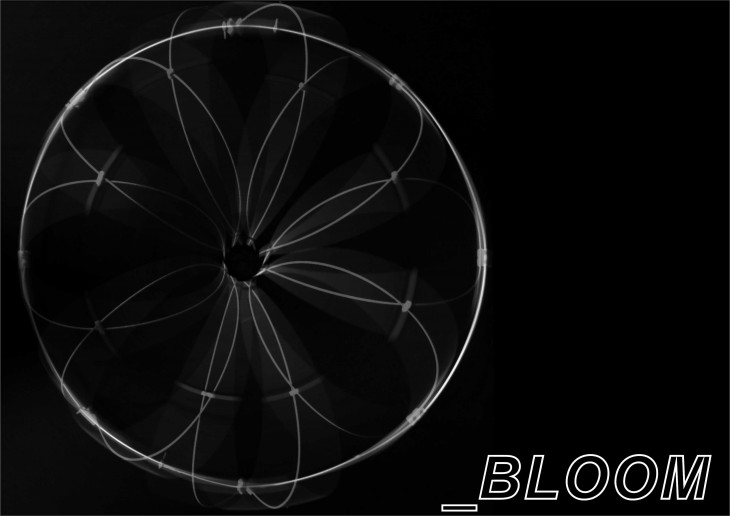The exercise aims to understand the various aspects of milling machine, the ability for it to make an architectural detail and to understand its constraints on design. Focusing on the use of milling tools in order to get specific forms, the exercise was to design a hexagonal tile of size that would be tangential to the points given so as to create a seamless repetition of patterned designs thus the pattern should allow rain water to flow seamlessly in order for it to make its way out of the pattern.
Dactylogram
_bLOOM
The idea was to create a structure that was deploy-able by unfolding and at the same time to imitate the flowers that open and close with the sun (nyctinasty).
Remolino
 Given the specific edge conditions and water channeling requirements, our main objectives for this exercise were to respect these conditions while creating a decentralized tile pattern that would break the tile boundaries to create a carpet effect. The twisting transforms lines into curves, these would continue across adjacent tiles to ensure the “carpet effect”. The edges are lofted towards the center having a gentle slope channeling water towards the tile’s extremities and out along the joints.
Given the specific edge conditions and water channeling requirements, our main objectives for this exercise were to respect these conditions while creating a decentralized tile pattern that would break the tile boundaries to create a carpet effect. The twisting transforms lines into curves, these would continue across adjacent tiles to ensure the “carpet effect”. The edges are lofted towards the center having a gentle slope channeling water towards the tile’s extremities and out along the joints.
Acts on Tracks
Catenary curve is the curve that an idealized hanging chain or cable assumes under its own weight when supported only at its ends. While freely hanging catenaries have more often than not elastic physical properties, we decided to explore the abilities of fiberglass rods acting as catenary arches, partially mimicking Gaudi’s research.
Fiberglass rods, despite their small cross-sectional diameter, have an inherent ability to return to their original flattened state after mechanical deformation has been applied to them. Thus, to make this experiment possible we attempted to develop the above mentioned side supports of the arch and make them kinetics, to further allow unconstrained movement of the arch along its longitudinal axis.
CIRCUITING
Objective:
The third segment in the digital fabrication class is Milling. Milling is “the machining process of using rotary cutters to remove material.” (wikipedia) Milling is a tool that has a variety of options and can be used on multiple scales. Inspired by the city and the architecture of Barcelona, the prompt for the milling machine exercise was to design a hexagonal tile, 40mm deep with 144mm sides. Constraints for the top face of the tile allowed students to explore variations in the depth up to 7mm. Read More




